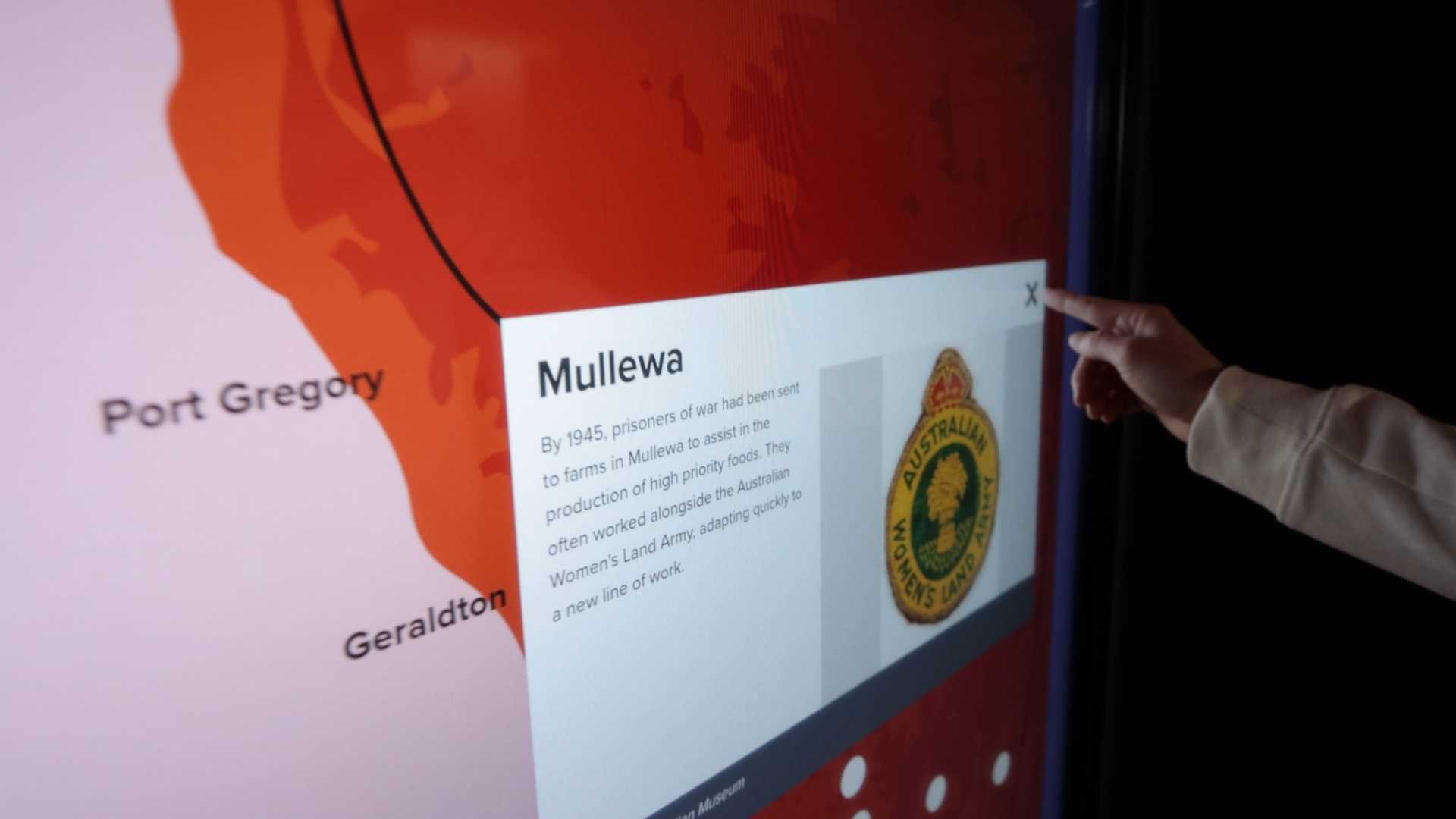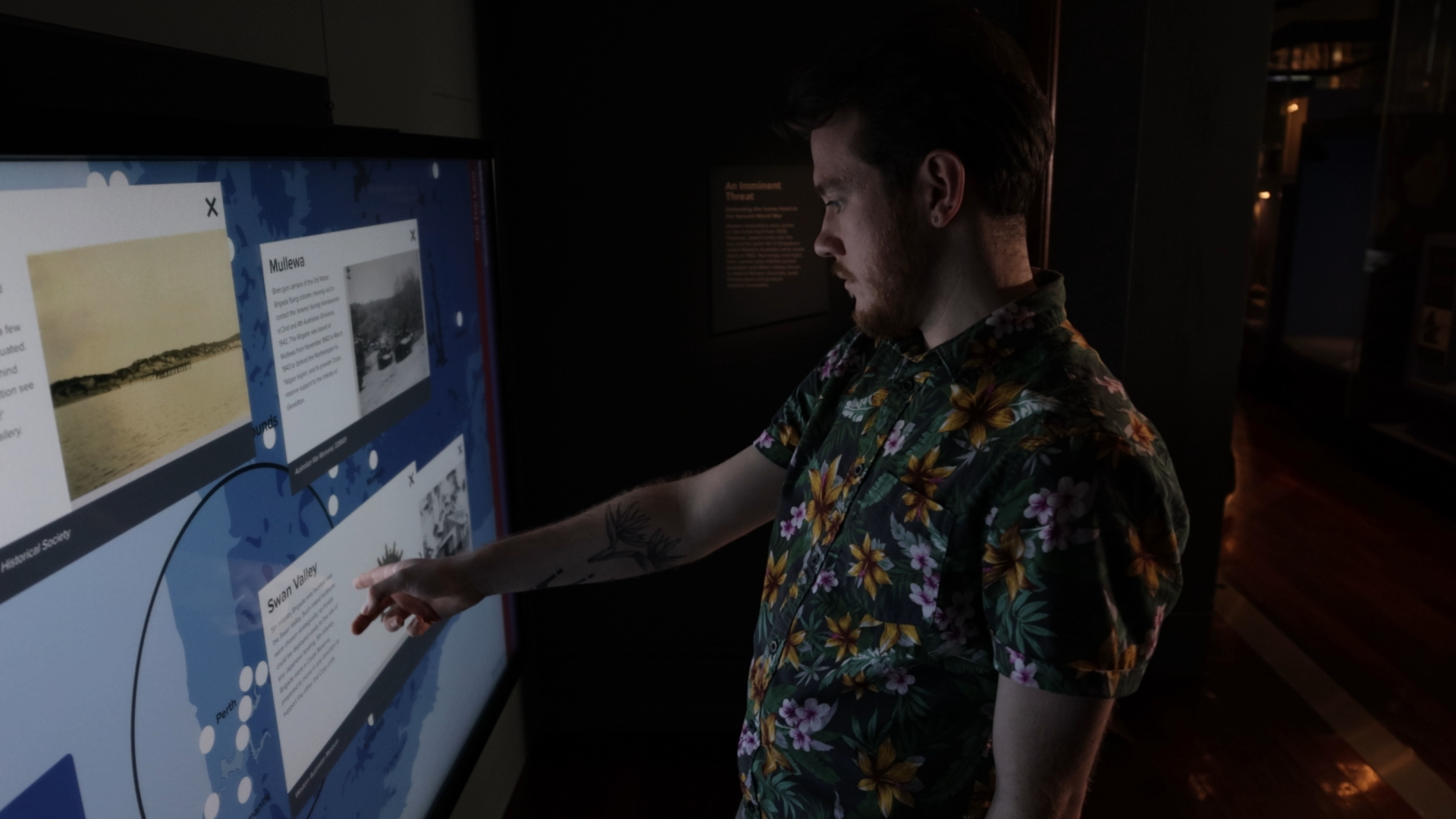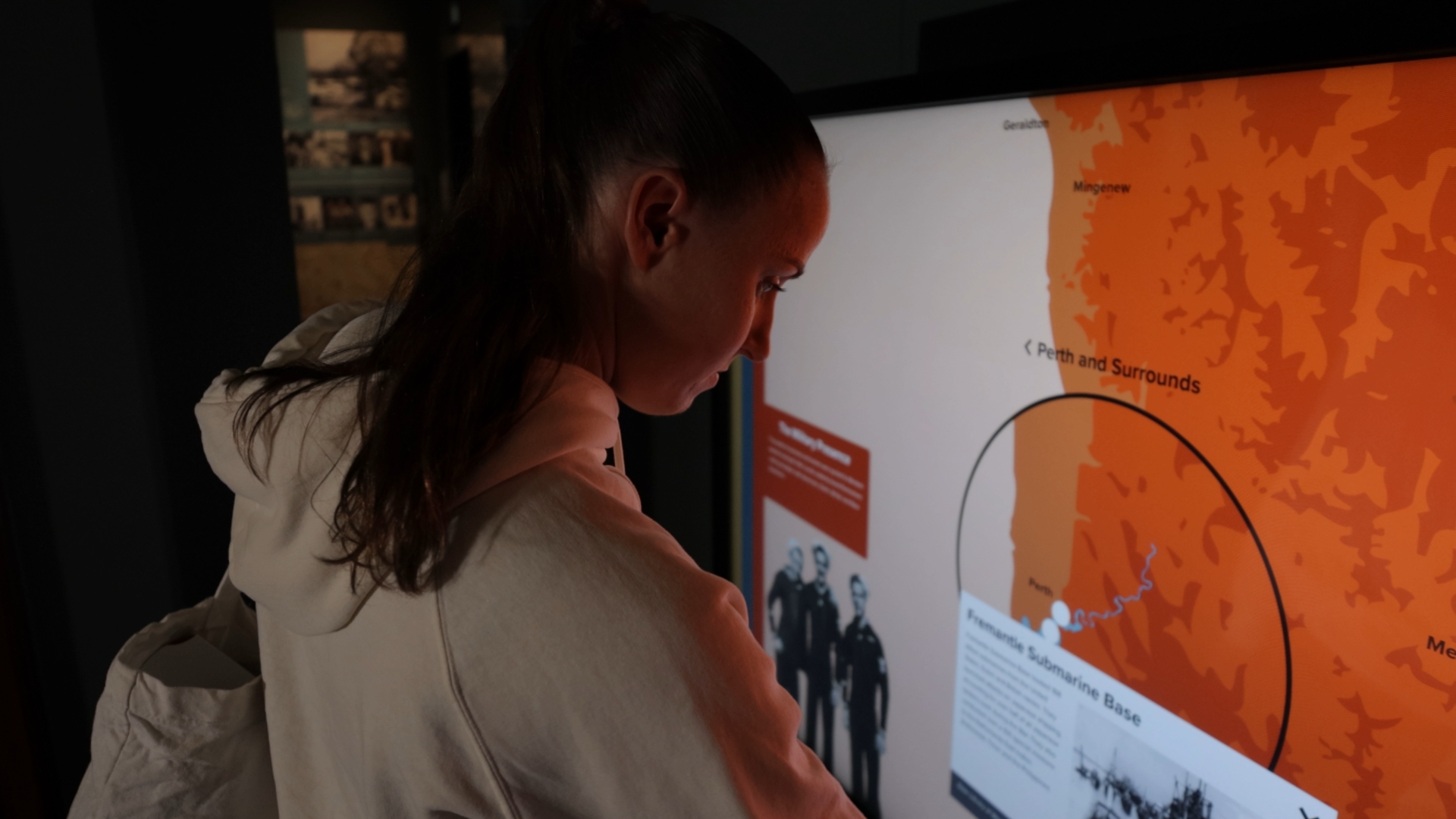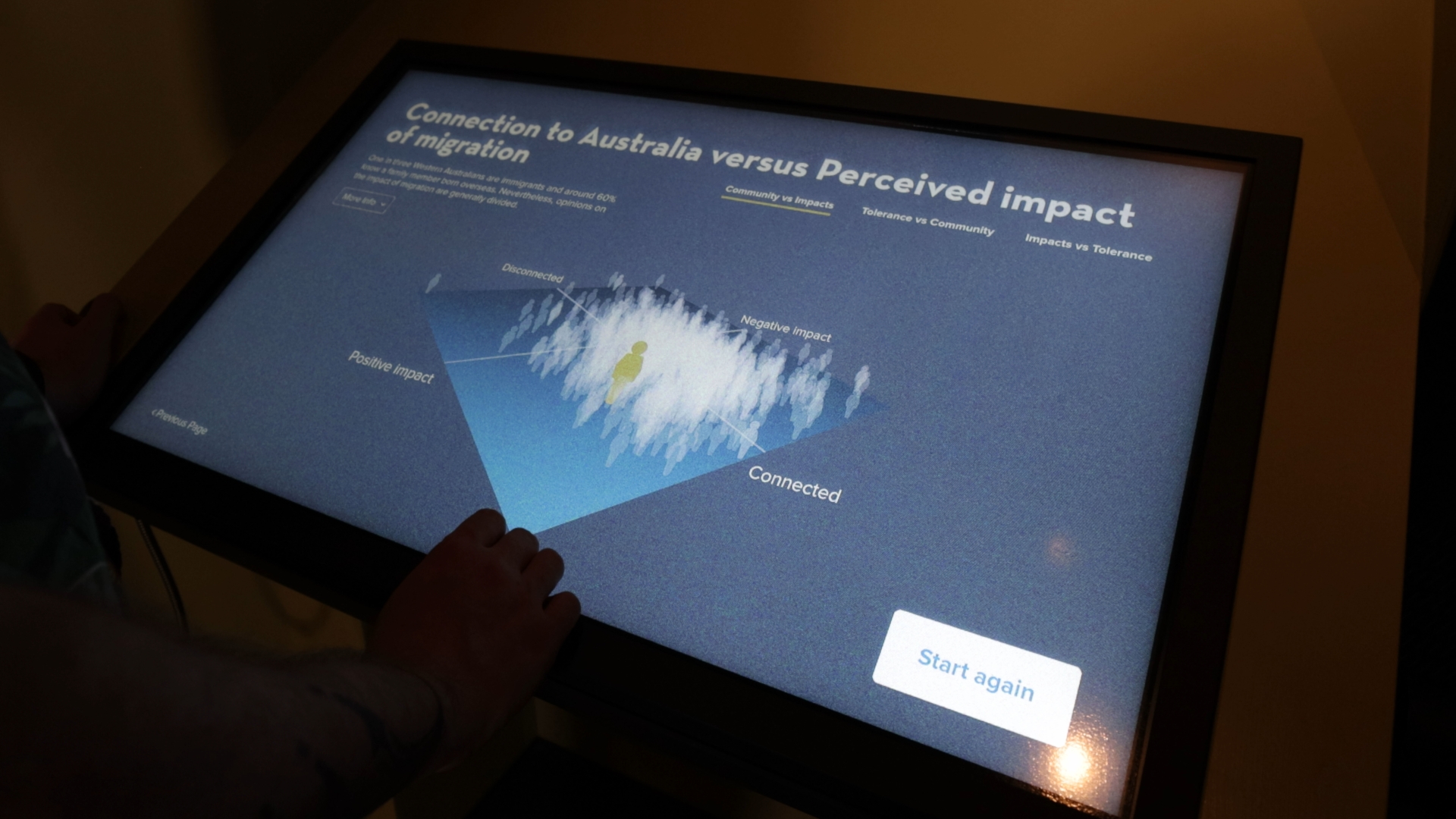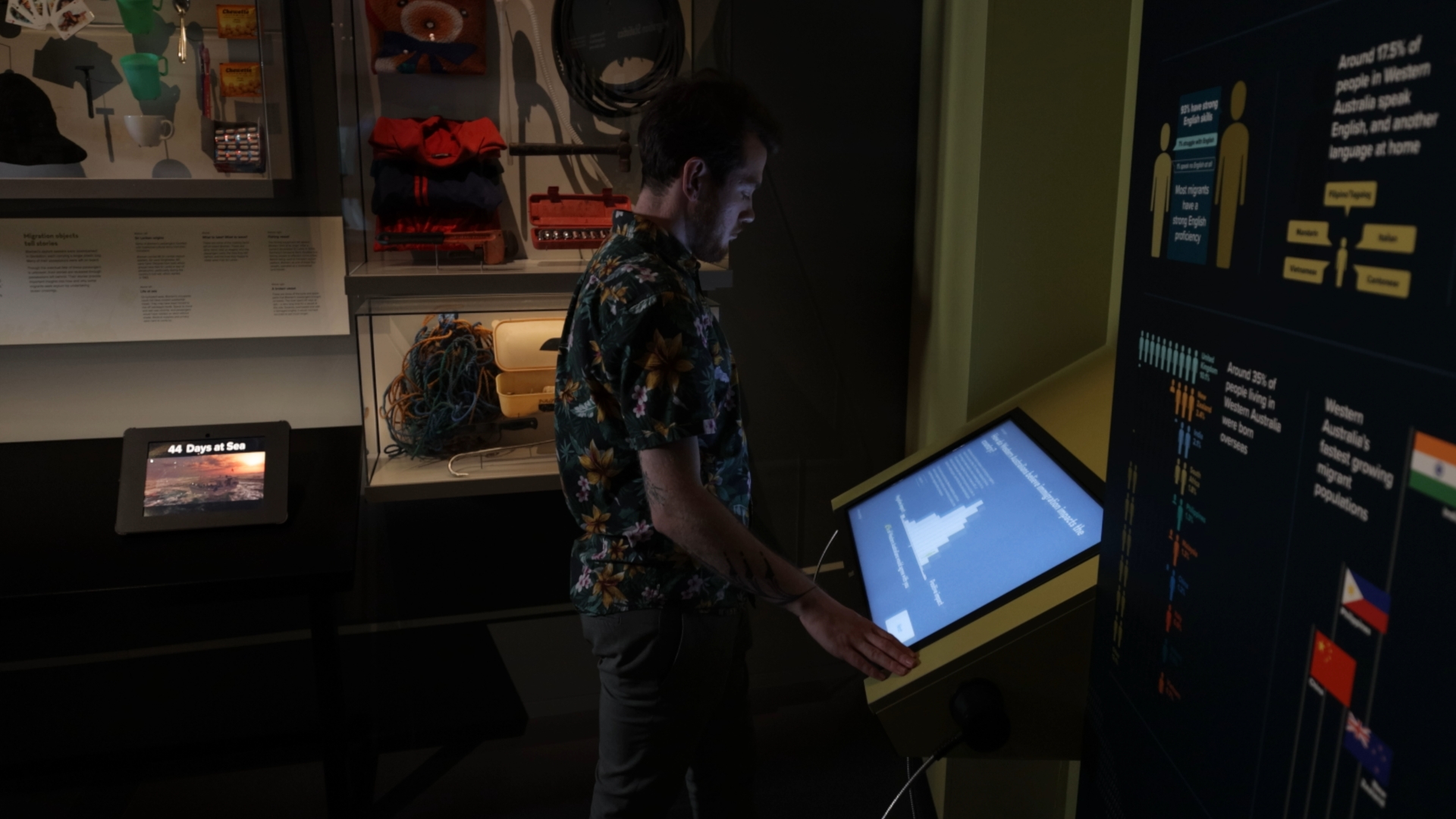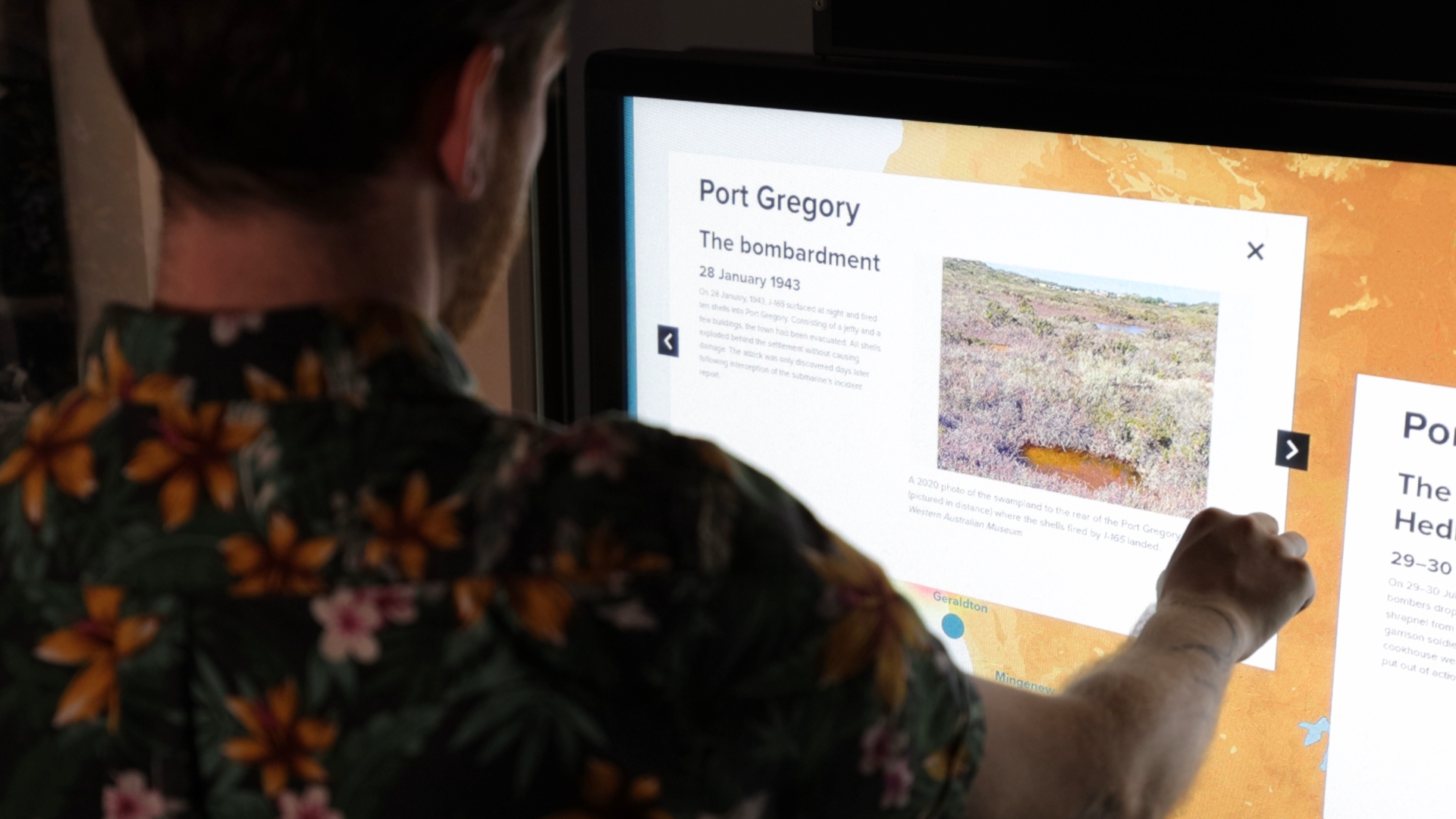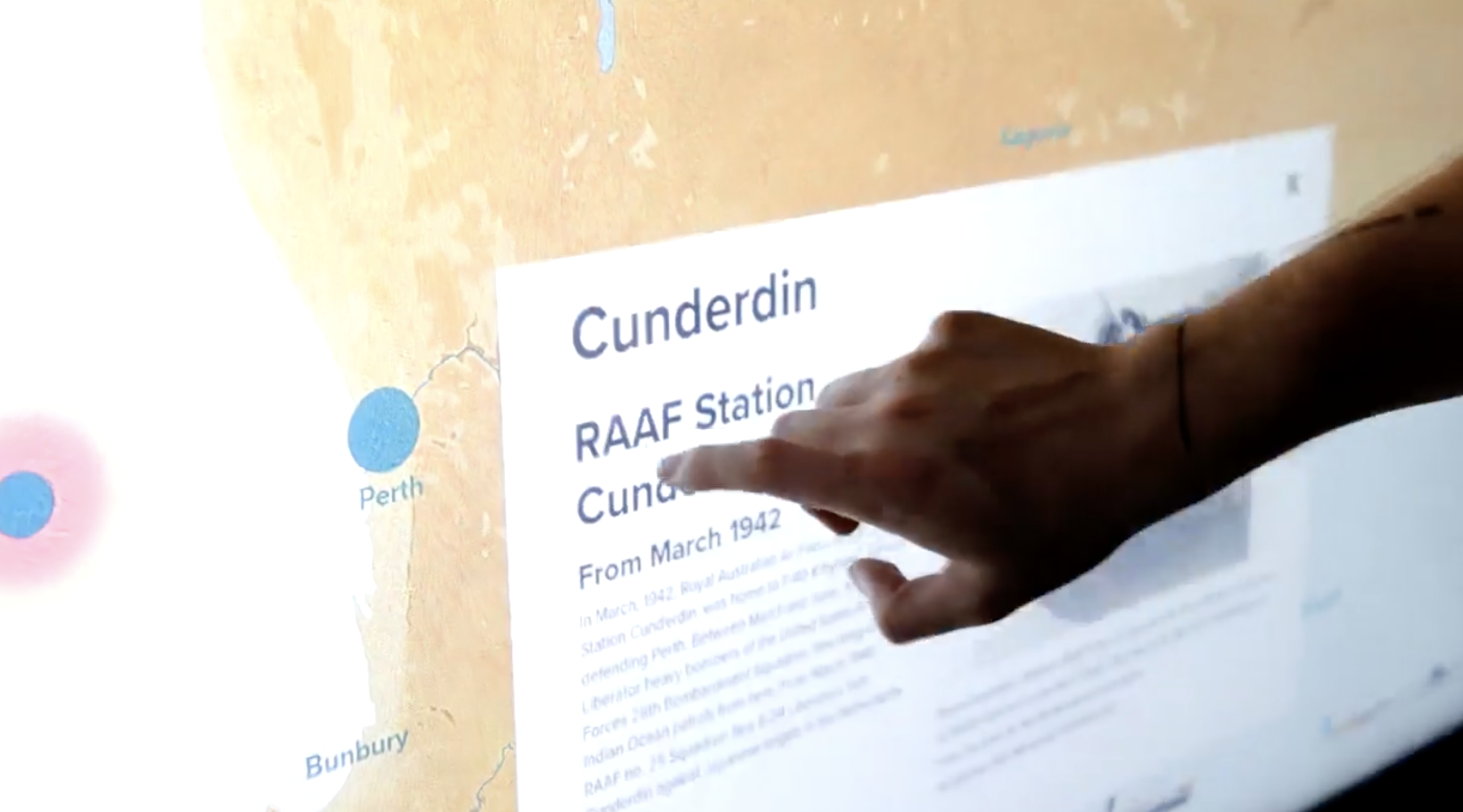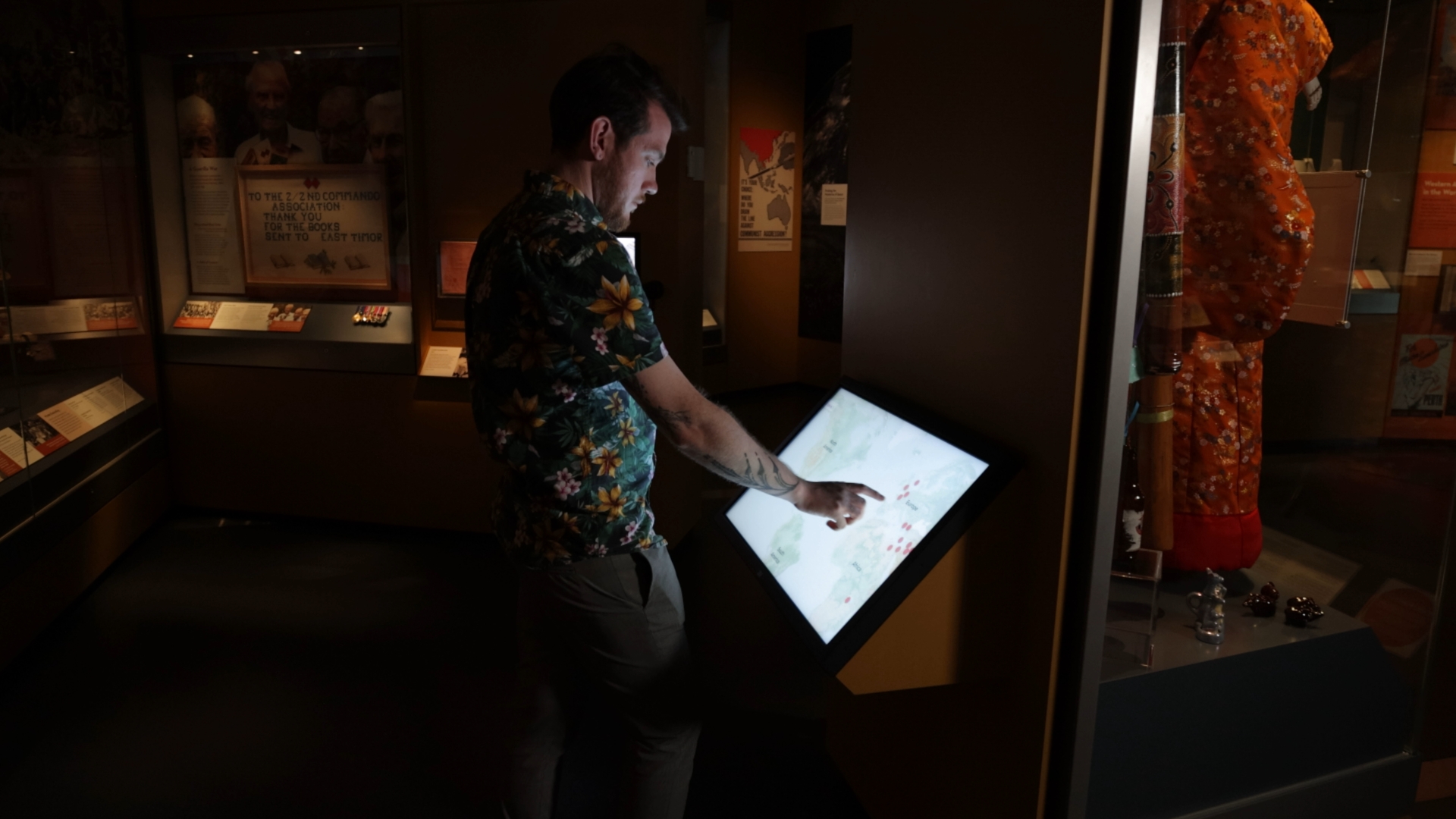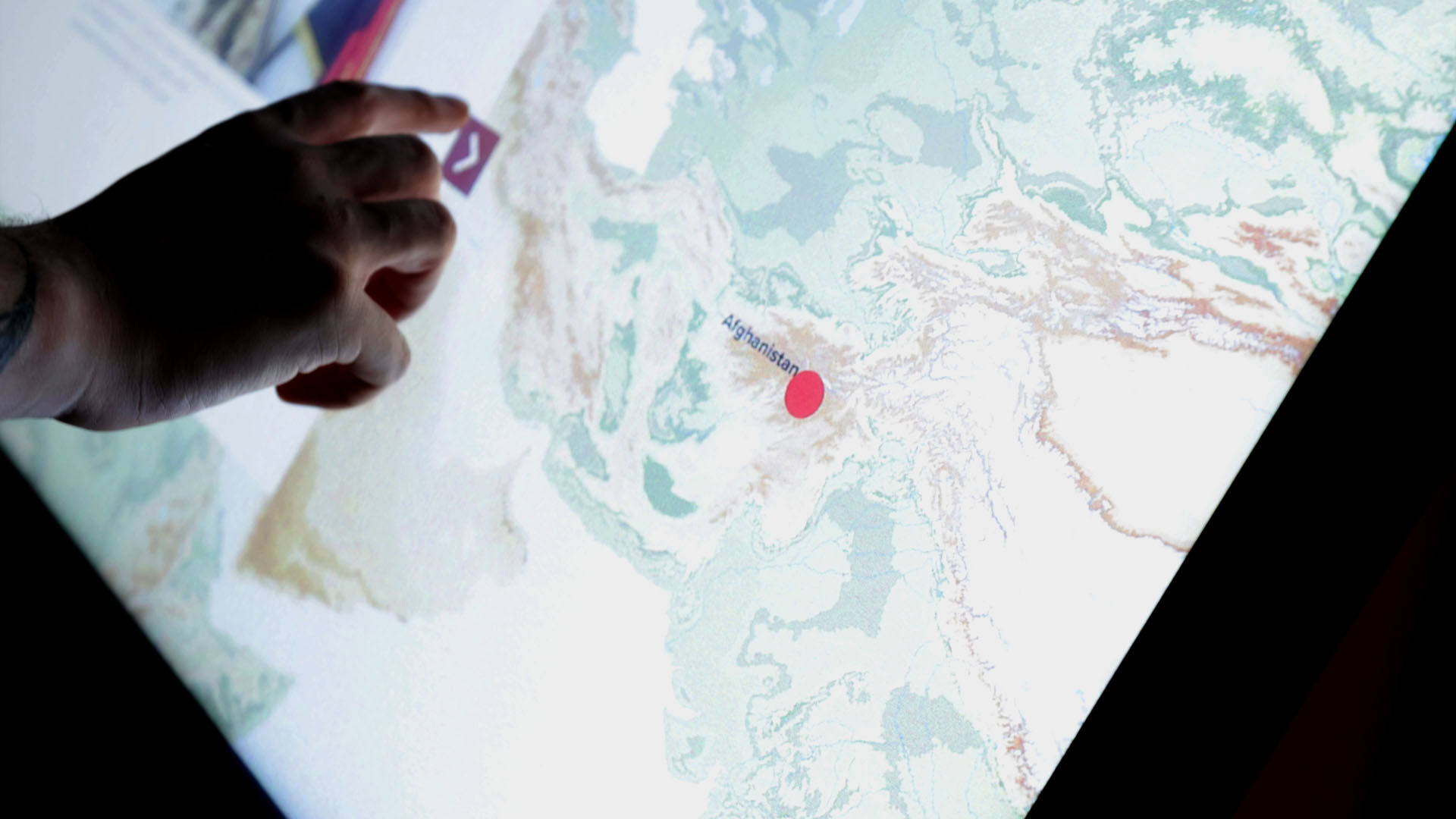Western Australia Museum – Boola Bardip
The Western Australia Museum (WAM) invites visitors to explore the history of WA through visualisations and interactive displays. The interactives that I was brought in to work on explored the local impacts of world-wide conflicts, and an immigration questionnaire that explores the ethnic composition of the state.
My Role
I was brought into the project after the initial design ideation, to develop the initial low fidelity wireframes into the final designs and to develop the interfaces. This included familiarising myself with the content and defining a process to communicate with and manage the other developers on the project.
I worked as both designer and front end developer for this team. This minimised the time required for design handover, however reduced the amount of internal feedback opportunities. As a result, we made efforts to prioritise thorough user testing and QA.
The Process
For each interactive, we followed a consistent design approach:
- Understand context: As the initial ideation for each interactive had already been performed, it was important to download the context and all the rationale that had already gone into the designs. During this step, we also discussed with the client why the current designs were not fit for purpose and recommended alternatives and modifications that we were ready to implement within the timeline of the project.
- Mid fidelity wireframes: Since designs for the interactives already existed in various states, I iterated on these in varying levels of fidelity in order to align functionality, usability, and requirements.
- High fidelity designs: Fully designed to look like the final product, we created the interactives as prototypes using the data set. We used these as a final sign-off with the client and to user test to fix any usability issues pre-development.
- Development: We developed the interactives, continuing to user test and ensure testing was done on the specified hardware, on location.
